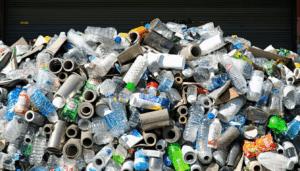A sweeping wave of new regulations and industry initiatives is reshaping how recyclable materials are managed in the United States, as federal and state governments respond to mounting environmental concerns. In June 2025, policymakers, businesses, and communities nationwide are accelerating efforts to reduce landfill waste by improving recycling systems and promoting sustainable practices. These changes aim to address growing public demand for action on climate change while supporting a circular economy.
New Policies Targeting Recyclable Materials
The U.S. Environmental Protection Agency (EPA) recently announced updated national guidelines for recyclable materials processing, marking the most significant overhaul in over a decade. The new standards require municipalities to expand curbside collection programs and invest in advanced sorting technologies by 2027.
Several states have already enacted stricter mandates:
- California now requires all packaging sold within its borders to be recyclable or compostable by 2030.
- New York has introduced extended producer responsibility laws that hold manufacturers accountable for post-consumer waste.
- Texas is piloting incentive programs encouraging businesses to use recycled content in their products.
According to EPA Administrator Lisa Perez, “These policies reflect our commitment to reducing pollution at its source while creating green jobs across America.” She emphasized that improved recycling infrastructure will help divert millions of tons of plastic, glass, paper, and metals from landfills each year.
Industry Response: Investments and Innovation
Major corporations are responding with substantial investments in recycling technology. Waste management companies have unveiled automated facilities capable of separating complex streams of recyclable materials more efficiently than ever before.
John Matthews, CEO of GreenCycle Solutions—a leading recycling firm—explained: “We’re seeing unprecedented collaboration between government agencies and private industry. Our newest plants can process up to 50% more material with less contamination.”
Consumer brands such as Coca-Cola and Procter & Gamble have pledged aggressive targets for using recycled content in packaging by 2030. These commitments align with shifting consumer preferences; recent surveys show that over two-thirds of Americans prefer products made from recycled or sustainably sourced materials.
Key market data highlights this trend:
- The U.S. recycling rate reached an estimated 36% in early 2025.
- Investment in domestic recycling infrastructure grew by $2 billion last year alone.
- Demand for post-consumer plastics rose nearly 18% compared with pre-pandemic levels.
Challenges Facing Recycling Programs
Despite progress, significant challenges remain for both public agencies and private operators managing recyclable materials:
- Contamination: Non-recyclable items mixed into bins can spoil entire batches—costing cities millions annually.
- Global Market Shifts: Restrictions on exports mean more material must be processed domestically.
- Education Gaps: Many Americans remain unsure about what can actually be recycled under local rules.
According to Dr. Emily Carter from the National Recycling Coalition: “Public education campaigns are critical if we want these reforms to succeed long-term.” She advocates clearer labeling on packaging as well as school-based outreach programs targeting younger generations.
Economic Impact on Stakeholders
The evolving landscape around recyclable materials presents both risks and opportunities:
For Municipalities:
– Increased costs associated with upgrading equipment
– Potential savings through reduced landfill fees
– Job creation tied directly to expanded operations
For Businesses:
– Higher compliance costs but also access to new markets
– Enhanced brand reputation among eco-conscious consumers
– Opportunities for innovation through product redesigns
For Consumers:
– Greater convenience via expanded curbside options
– More choices when purchasing sustainable goods
– Responsibility for proper sorting remains essential
Industry analysts predict continued growth if current trends persist but warn that success depends on ongoing investment at every level—from households up through federal agencies.
Looking Ahead: The Future of Recyclable Materials Management
Experts agree that momentum behind these policy shifts is unlikely to slow soon given bipartisan support at both state and national levels—and increasing pressure from global partners committed under international climate agreements like the Paris Accord.
Emerging technologies such as chemical recycling could further transform how plastics are reused while artificial intelligence promises smarter sorting systems capable of handling even complex composite items previously destined only for landfills or incinerators.
As Dr. Carter notes: “We’re entering an era where effective management of recyclable materials isn’t just good environmental policy—it’s smart economics.”
Frequently Asked Questions (FAQ)
What counts as a recyclable material?
Common examples include paper products (newspapers), cardboard boxes, aluminum cans, steel tins, glass bottles/jars—and certain types (#1 & #2) plastic containers depending on local guidelines.
Why do some recyclables end up in landfills?
Contamination—such as food residue—or improper sorting often renders otherwise-recyclable items unusable within current processing systems; this underscores the need for better consumer education about what belongs where!
How do new policies affect everyday Americans?
Residents may see changes like expanded curbside pickup schedules or clearer instructions about accepted items; they’ll also benefit indirectly from cleaner communities plus economic growth linked directly back into their neighborhoods via job creation initiatives tied specifically toward improved handling/processing efforts nationwide!
In summary: sweeping reforms around recyclable materials signal a major shift toward sustainability across America—with far-reaching implications not only environmentally but economically too—as stakeholders adapt rapidly amid rising expectations set forth both locally here at home alongside broader international commitments alike!




